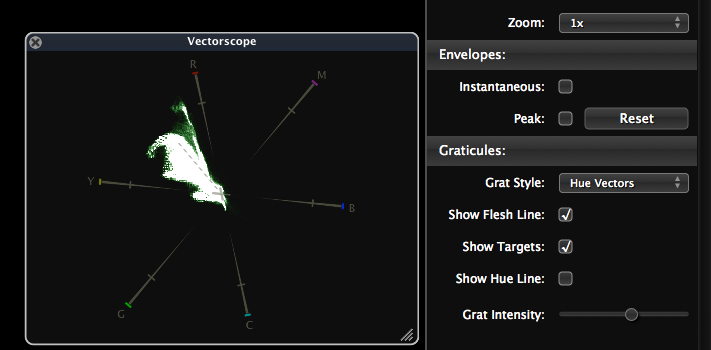
That’s not counting the new stand alone recorders and other devices. There were also new codecs for existing cameras. There were also additional new cameras that I didn’t check out. With a reputation for excellence, technical expertise and competitive pricing, CCI Solutions has served churches across the US in their media, equipment, design and installation needs for over 35 years.At NAB 2012 I saw three new cameras that have four new recording codecs. This post is brought to you by CCI Solutions. I love supporting the small developer community, so check them out at.
Ultrascopes vs scopebox software#
We had an issue with the software not recognizing both cards, and support has been very responsive to getting us fixed up. If you don’t have any way of monitoring your video, I strongly recommend you look at something like this (Blackmagic also has a similar solution called UltraScope, though it’s hardware & software, and thus more expensive). So for under $400, I have a very capable software scope solution that works quite well. We already had the Mac, and it took another $275 or so to get the Decklink installed. The best part about the app is that it’s all of $99. I don’t have a hardware scope to compare to, so I can’t promise you everything you monitor with ScopeBox would be 100% accurate, but so far, it has proved more than adequate for getting properly exposed video up to our IMAG screens. One such firm is Divergent Media with their product called ScopeBox. Today, with processing power to spare, several companies have virtualized the scopes. Back in the day (and it’s still true today), a hardware waveform monitor/vectorscope would cost you at least $4,000, probably more.
Ultrascopes vs scopebox how to#
Most churches don’t spend the $1,500-6,000 on a professional broadcast monitor that can be calibrated (or know how to properly calibrate the one they have), so it’s easy to end up with bad video on the screen.Īll of that to say, I’m still a firm believer in having a set of scopes available to monitor the video image before it hits the screen. In churches, it’s really easy to put up a few cameras and a switcher and send the signal to a couple of projectors and call it video IMAG.Ĭall me old-school, but I like to know what I’m looking at and have an empirical reference to know that my whites are actually not overblown, faces are where they should be in level and my blacks aren’t crushed. No one cares much about levels, color or any of those pesky details (which is clearly evident every time I watch many of the second-tier cable networks). Today of course, you dump some files from a card to a hard drive, drop them on the timeline and cut the story.

Of course, we also had to line up various decks, and do a whole lot of other things. Those tools ensured that colors where what they were supposed to be, and black and white levels were within spec. A big part of an editor’s job back then was monitoring levels using a waveform monitor and vector scope. My video education taught me to keep things within broadcast standards, because that’s where the good video ended up. Later, I moved up to M-II and a CMX style editor (some of you young guys don’t even know what any of that means…). I learned how to edit on 3/4” U-Matic machines with an A/B Roll controller. I’ve said it before, I’m a bit of a video snob.


 0 kommentar(er)
0 kommentar(er)
